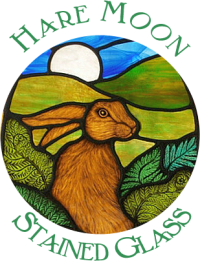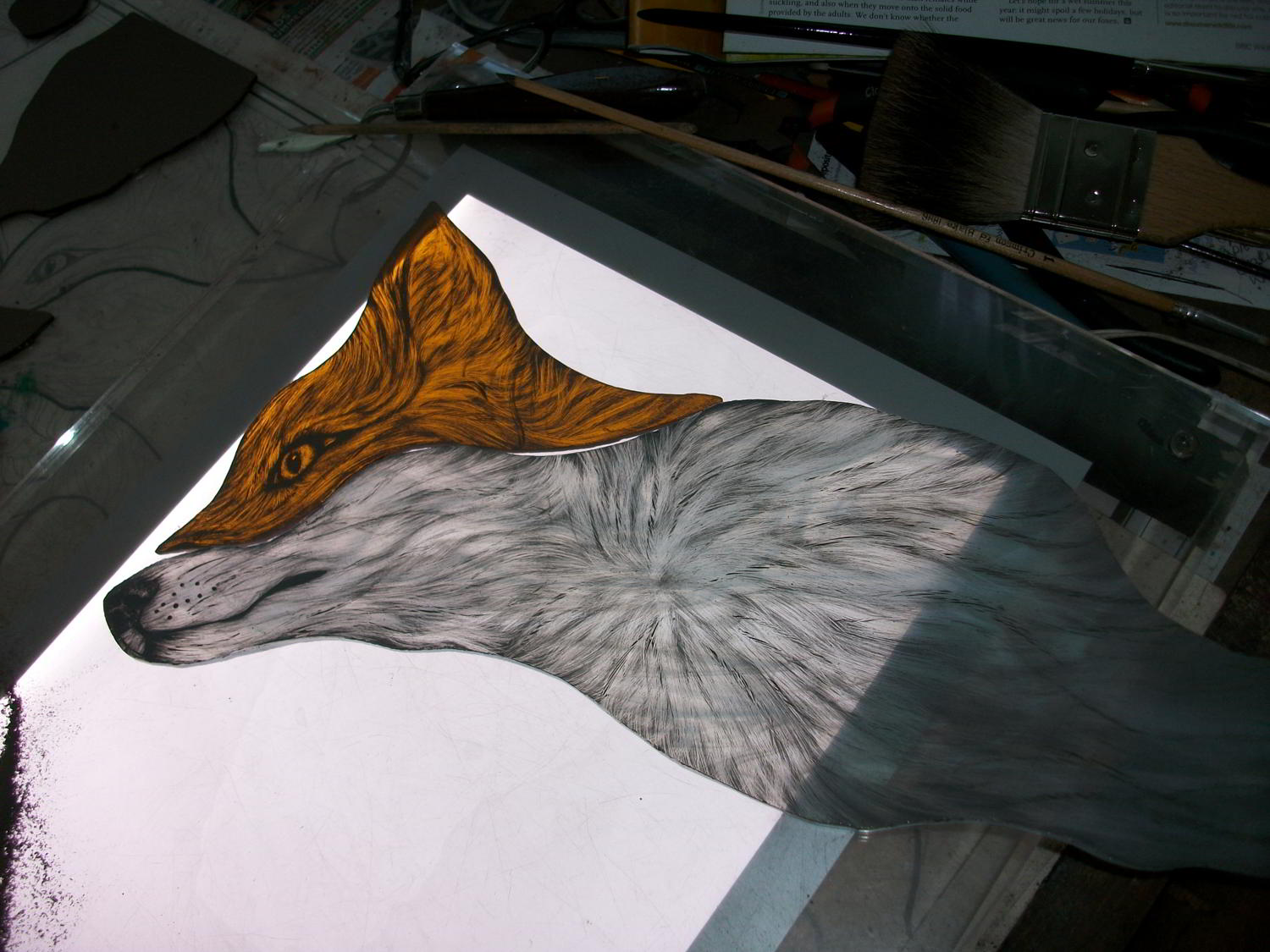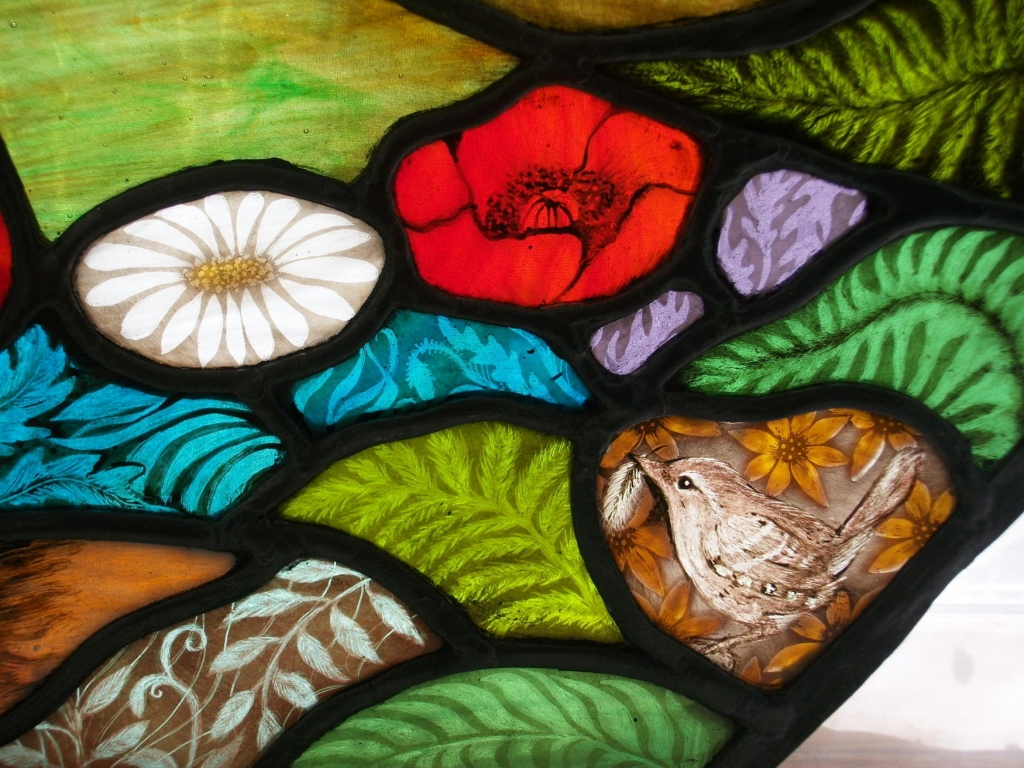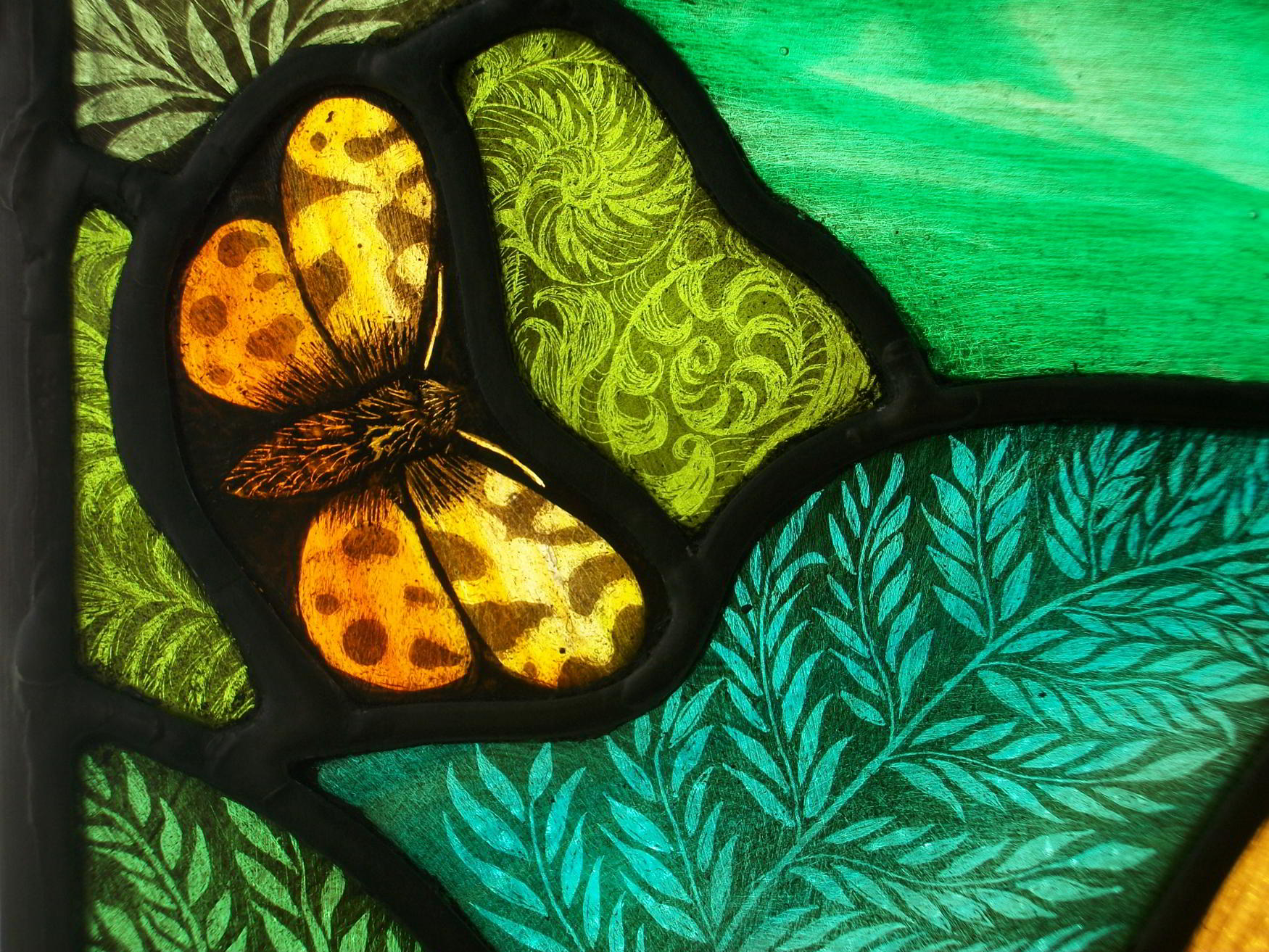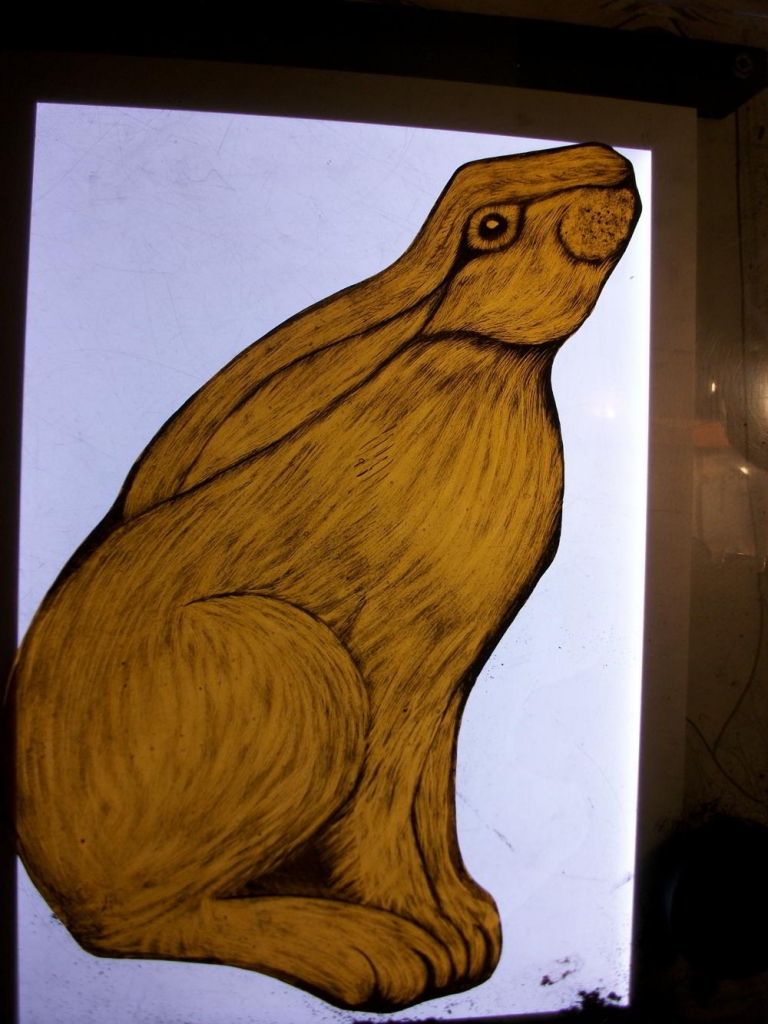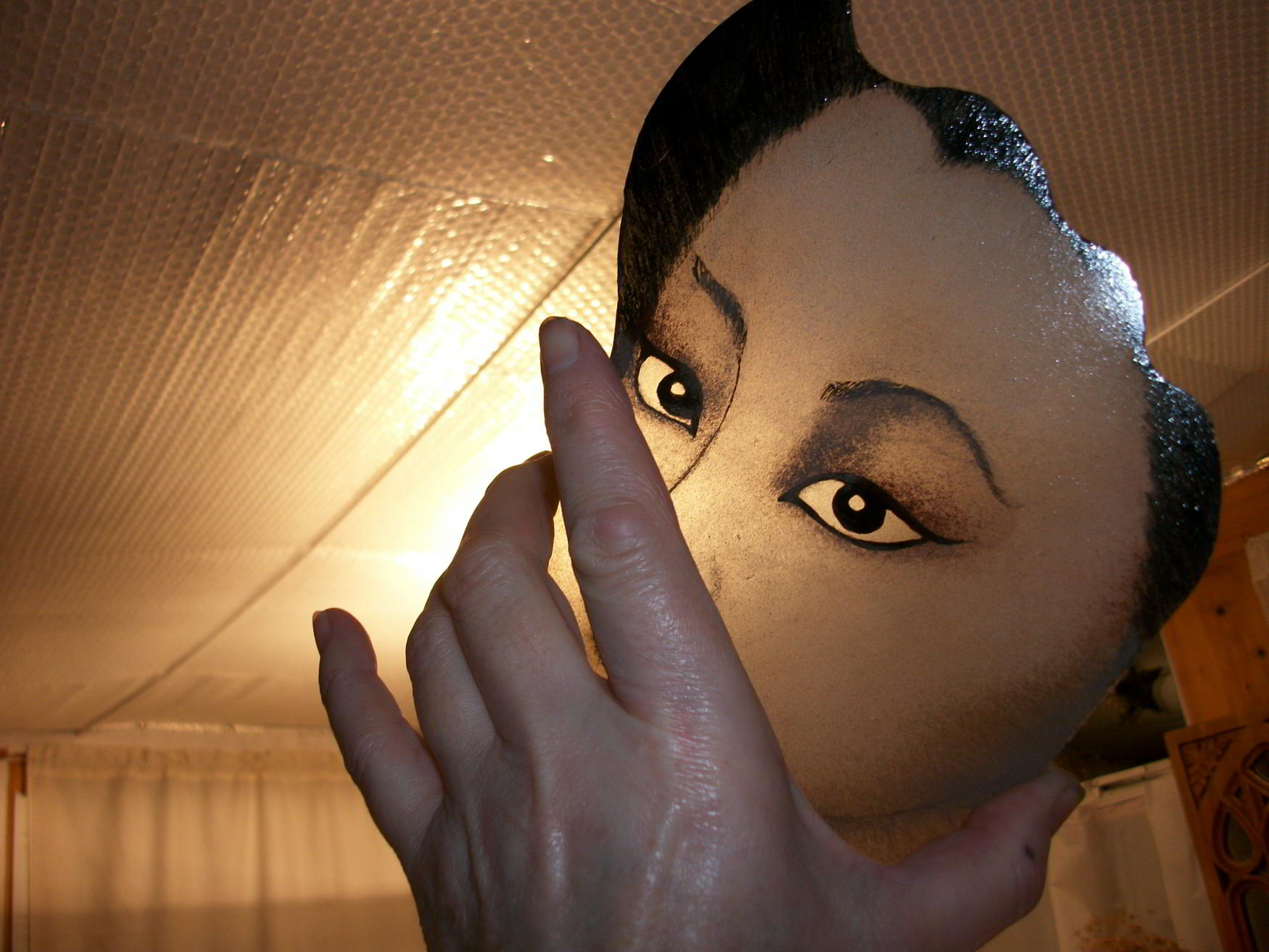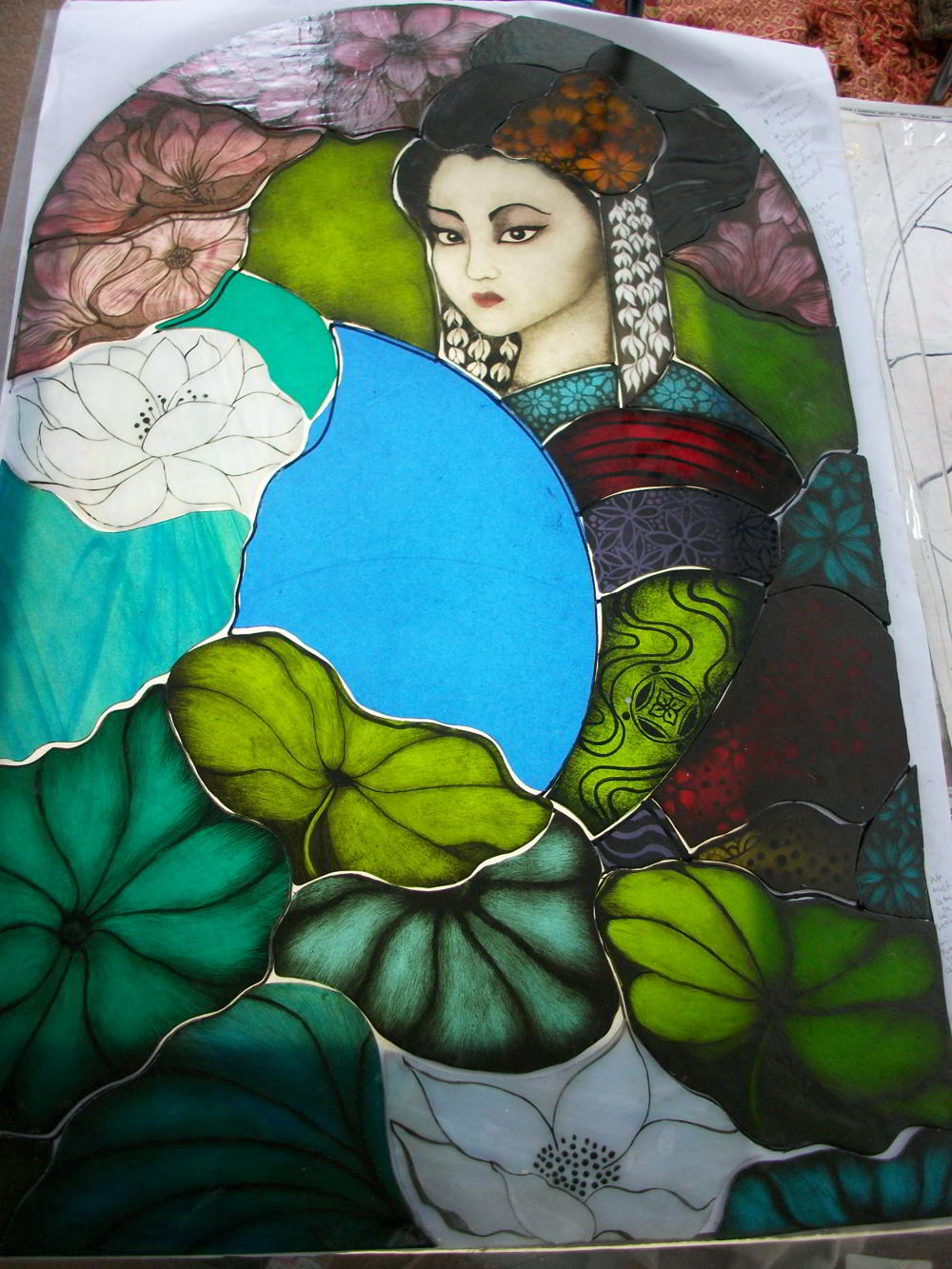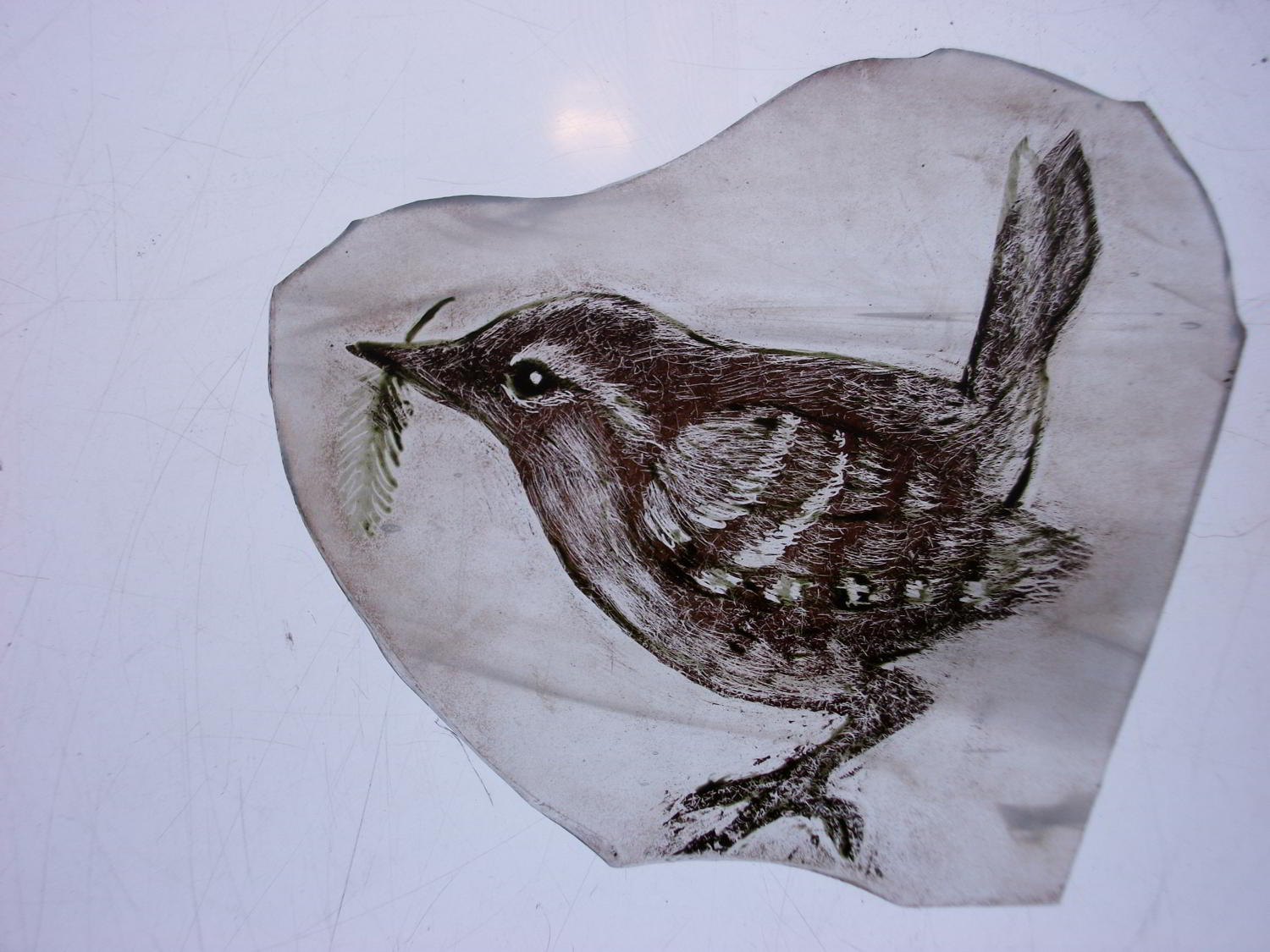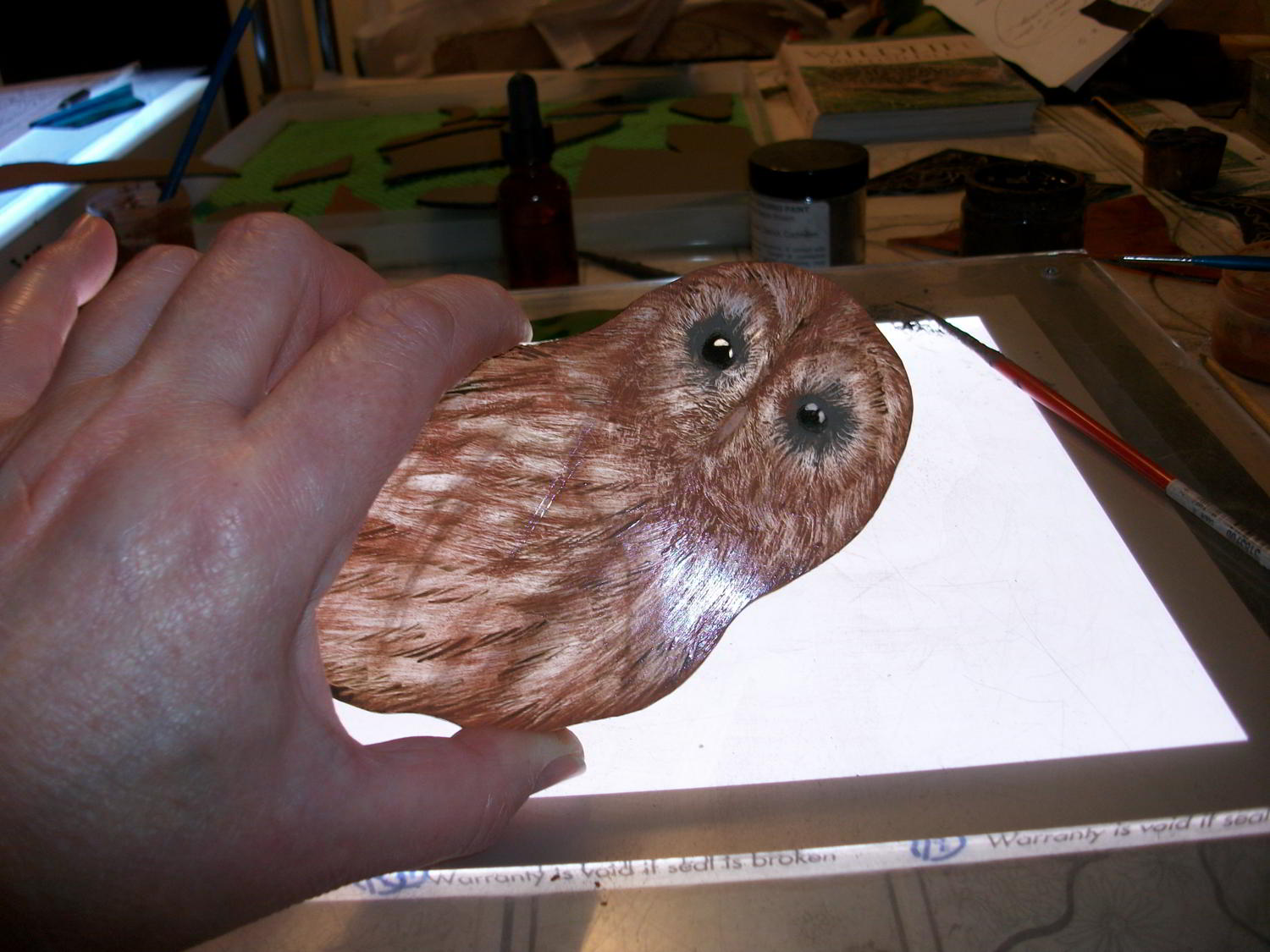HOW IS DETAIL ADDED TO THE GLASS?
PAINTING, STAINING & FIRING
To achieve the results that I desire I often spend many hours on the creation of each integral section; gradually building up the qualities of chiaroscuro to achieve an affect. This particular process requires several firings in the kiln.
The painting of the glass which adds all of its fine detail is still achieved by the same traditional process first used in the 8th century. Specialist brushes are used to apply and manipulate the paint on the glass. The glass stainers paints contain finely ground lead, ground glass, and a medium such as water, gum arabic, wine or vinegar. Traditionally urine was used.
Silver stain is made from silver nitrate and is used to achieve yellow, amber and orange affects. It is this process that gives stained glass its name. Strictly specking stained glass without painted detail is called “Leaded Lights.”
The painted trace line work is usually added first to the glass with a fine brush called a trace line rigger. This is then refined with a needle and then fired permanently into the glass in the kiln. Shading is then added via matting the glass with paint and working into it with a hog brush or needles. This second faze is then fired. Further additions of paint are then added to enhance the affect and fired again each time. Some sections can require three, four or more painting enhancements and firings.
